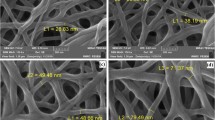Summary
In order to investigate the effect of Arg-Gly-Asp (RGD) peptide-modified silk biomaterial on the adhesion and proliferation of bone marrow-derived mesenchymal stem cells (MSCs), MSCs of third generation were seeded onto the surface of RGD-decorated silk (silk-RGD group), silk alone (silk group) or tissue culture plate (TCP group). After incubation for 4 or 12 h, MSCs were examined quantitatively by using precipitation method for cell attachment. The cell proliferation, which was defined as cell density, was compared among the three groups after culture for 1, 2, 3, and 4 days. Cell skeleton, which was labeled fluorescently, was observed under laser confocal microscope after 24 h of culture. The results showed that cell adhesion rate in silk-RGD group was higher than in silk group (P<0.05), but similar to that in TCP group after incubation for 4 or 12 h (P>0.05). There were no significant differences in the cell proliferation among the three groups at different time points (P>0.05 for all). Laser confocal microscopy revealed that in silk-RGD group, MSCs, strongly fluorescently stained, spread fully, with stress fibers clearly seen, while in silk group, actin filaments were sparsely aligned and less stress fibers were found. It was concluded that RGD peptide could improve the adhesion of MSCs to the silk scaffold, but had no impact on the proliferation of the cells.
Similar content being viewed by others
References
Vitte J, Benoliel AM, Pierres A, et al. Regulation of cell adhesion. Clin Hemorheol Microcirc, 2005,33(3):167–188
Zhao C, Yao J, Masuda H, et al. Structural characterization and artificial fiber formation of Bombyx mori silk fibroin in hexafluoro-iso-propanol solvent system. Biopolymers, 2003,69(2):253–259
Sofia S, McCarthy MB, Gronowicz G, et al. Functionalized silk-based biomaterials for bone formation. J Biomed Mater Res, 2001,54:139–148
Anderson K, Seneviratne AM, Izawa K, et al. Augmentation of tendon healing in an intraarticular bone tunnel with use of a bone growth factor. Am J Sports Med, 2001, 29:689–698
Shu XZ, Ghosh K, Liu P, et al. Attachment and spreading of fibroblasts on an RGD peptide modified injectable hyaluronan hydrogel. J Biomed Mater Res Part A, 2004,68:365–375
Rezania A, Healy KE. Biomimetic peptide surfaces that regulate adhesion, spreading, cytoskeletal organization, and mineralization of the matrix deposited by osteoblastlike cells. Biotechnol Prog, 1999,15:19–32
Butler DL, Juncosa-Melvin N, Boivin GP, et al. Functional tissue engineering for tendon repair: A multidisciplinary strategy using mesenchymal stem cells, bioscaffolds, and mechanical stimulation. J Orthop Res, 2008, 26(1):1–9
Wang Y, Kim HJ, Vunjak-Novakovic G, et al. Stem cell-based tissue engineering with silk biomaterials. Biomaterials, 2006, 27(36):6064–6082
Horan RL, Collette AL, Lee C, et al. Yarn design for functional tissue engineering. J Biomech, 2006, 39(12):2232–2240
Haider M, Megeed Z, Ghandehari H. Genetically engineered polymers: status and prospects for controlled release. J Control Release, 2004,95(1):1–26
Altman GH, Ho ran RL, Lu HH, et al. Silk matrix for tissue engineered anterior cruciate ligaments. Biomaterials, 2002, 23(20):4131–4141
Ma Z, Mao Z, Gao C. Surface modification and property analysis of biomedical polymers used for tissue engineering. Colloids Surf B Biointerfaces, 2007,60:137–157
Reches M, Gazit E. Biological and chemical decoration of peptide nanostructures via biotin-avidin interactions. J Nanosci Nanotechnol, 2007,7(7):2239–2245
Ratner BD, Bryant SJ. Biomaterials: where we have been and where we are going. Annu Rev Biomed Eng, 2004, 6:41–75
Pierschbacher MD, Ruoslahti E. Influence of stereochemistry of the sequence Arg-Gly Asp-Xaa on binding specificity in cell adhesion. J Biol Chem, 1987,262:17 294–17 298
LeBaron RG, Athanasiou KA. Extracellular matrix cell adhesion peptides: functional applications in orthopaedic materials. Tissue Eng, 2000,6(2):85–103
Rose DM, Alon R, Ginsberg MH. Integrin modulation and signalling in leukocyte adhesion and migration. Immunol Rev, 2007,218:126–34
Unser M. Spline: A perfect fit for signal and image processing. IEEE Signal Processing, 1999, 16(6):22–38
Huveneers S, Truong H, Danen EH. Integrins: Signalling, disease, and therapy. Int J Radiat Biol, 2007,14:1–9
Zamir E, Geiger B. Molecular complexity and dynamics of cell matrix adhesions. J Cell Sci, 2001,114:3583–3590
Lo SH. Focal adhesions: what’s new inside. Dev Biol, 2006, 294(2):280–291
Oliva IB, Coelho RM, Barcellos GG, et al. Effect of RGD-disintegrins on melanoma cell growth and metastasis: Involvement of the actin cytoskeleton, FAK and c-Fos. Toxicon, 2007,50(8):1053–1063
Shin H, Zygourakis K, Farach-Carson MC, et al. Attachment, proliferation, and migration of marrow stromal osteoblasts cultured on biomimetic hydrogels modified with an osteopontin-derived peptide. Biomaterial, 2004,25:895–906
Hoffmann A, Gross G. Tendon and ligament engineering: from cell biology to in vivo application. Regen Med, 2006,1(4): 563–574
Leo AJ, Grande DA. Mesenchymal stem cells in tissue engineering. Cells Tissues Organs, 2006,183(3):112–122
Author information
Authors and Affiliations
Corresponding author
Rights and permissions
About this article
Cite this article
Wang, H., Ma, L., Yang, S. et al. Effect of RGD-modified silk material on the adhesion and proliferation of bone marrow-derived mesenchymal stem cells. J. Huazhong Univ. Sci. Technol. [Med. Sci.] 29, 80–83 (2009). https://doi.org/10.1007/s11596-009-0117-1
Received:
Published:
Issue Date:
DOI: https://doi.org/10.1007/s11596-009-0117-1




